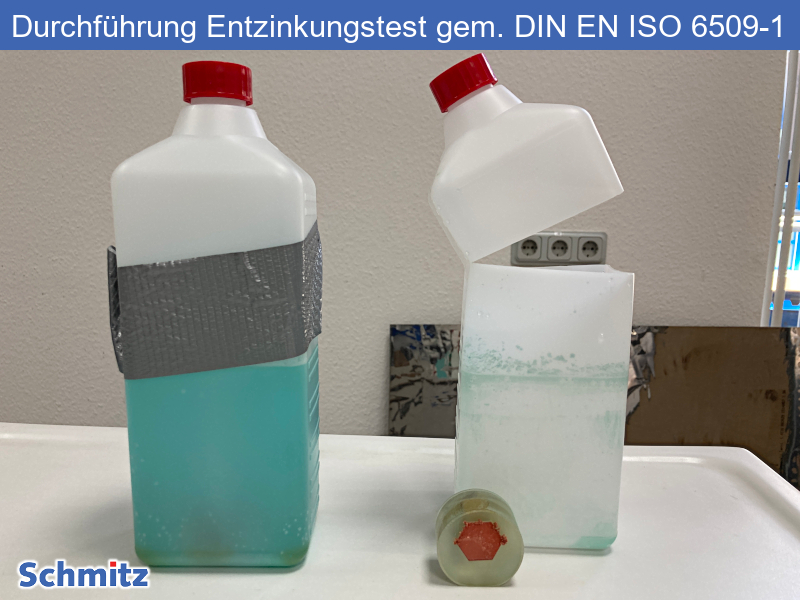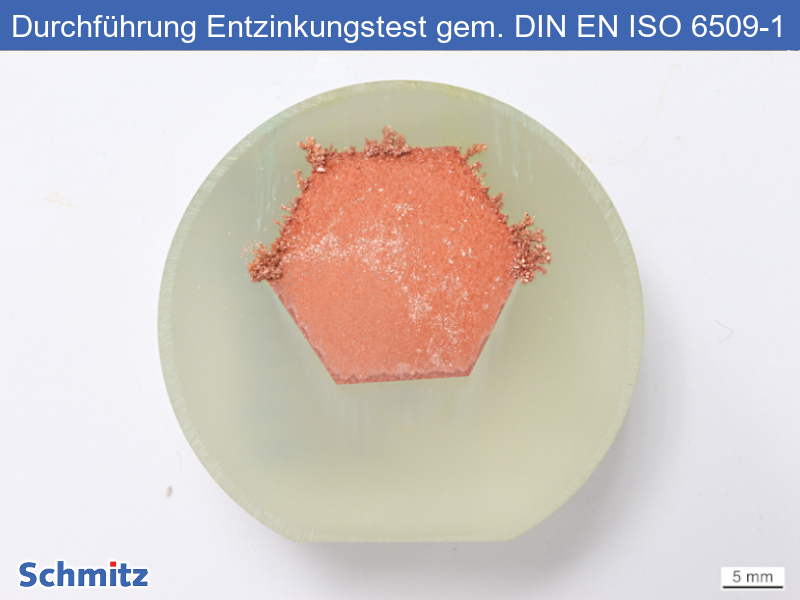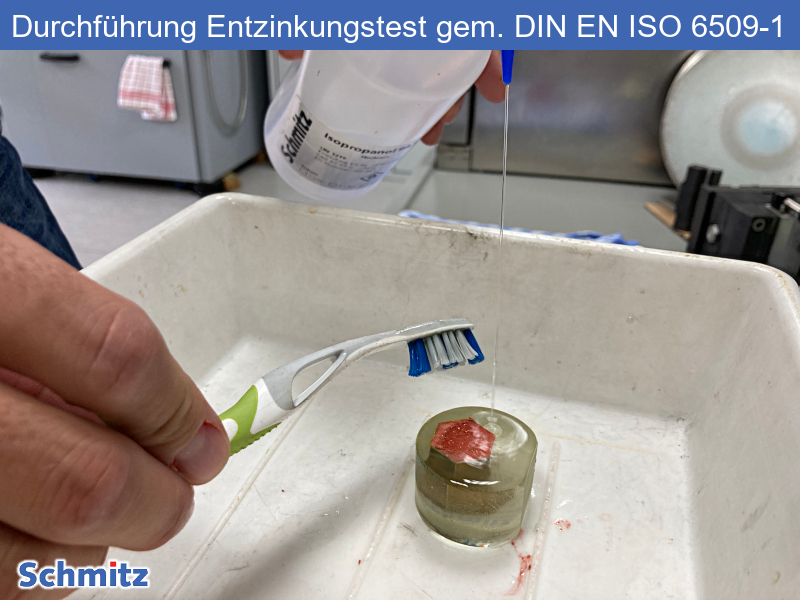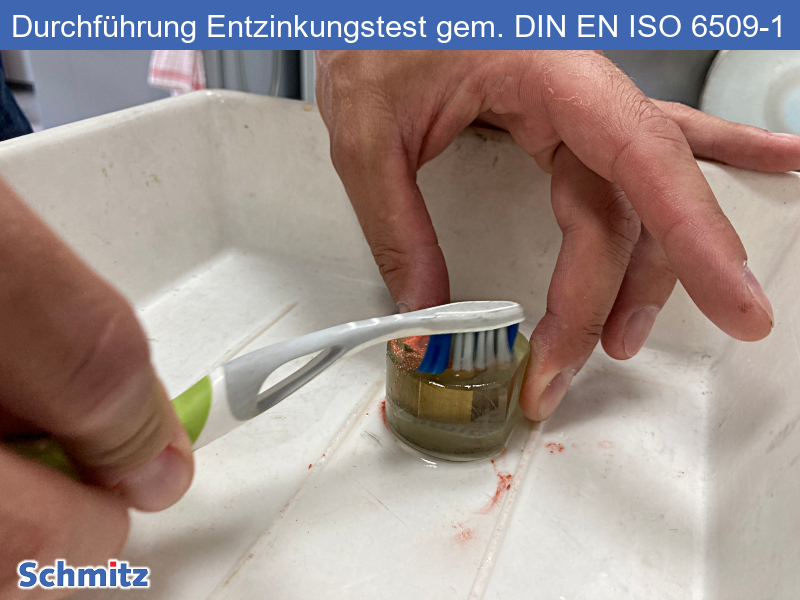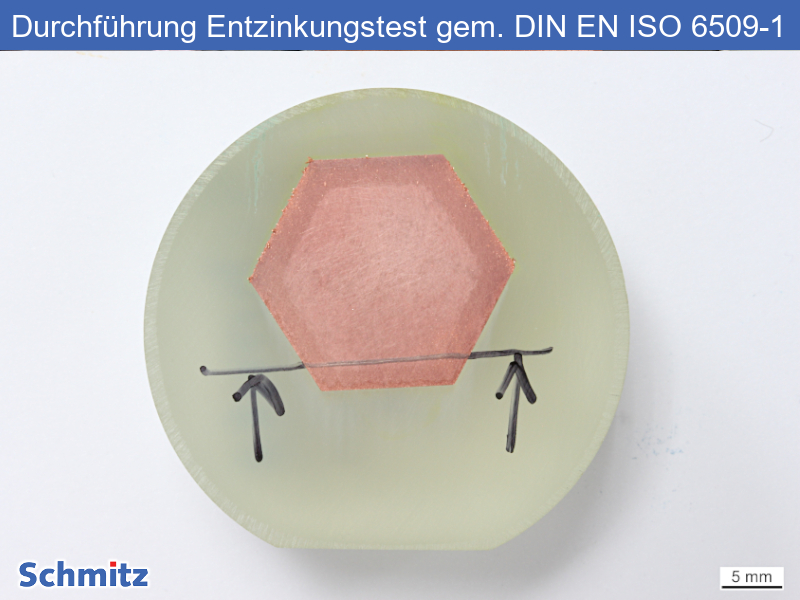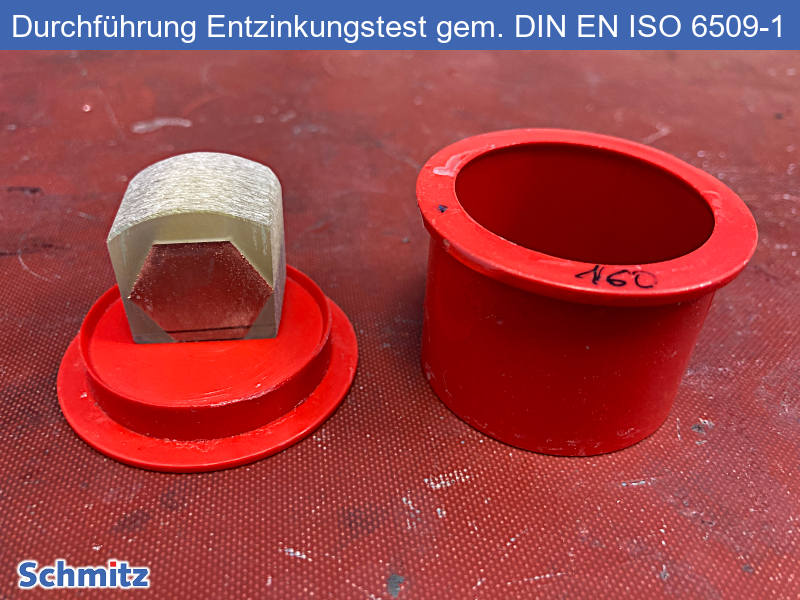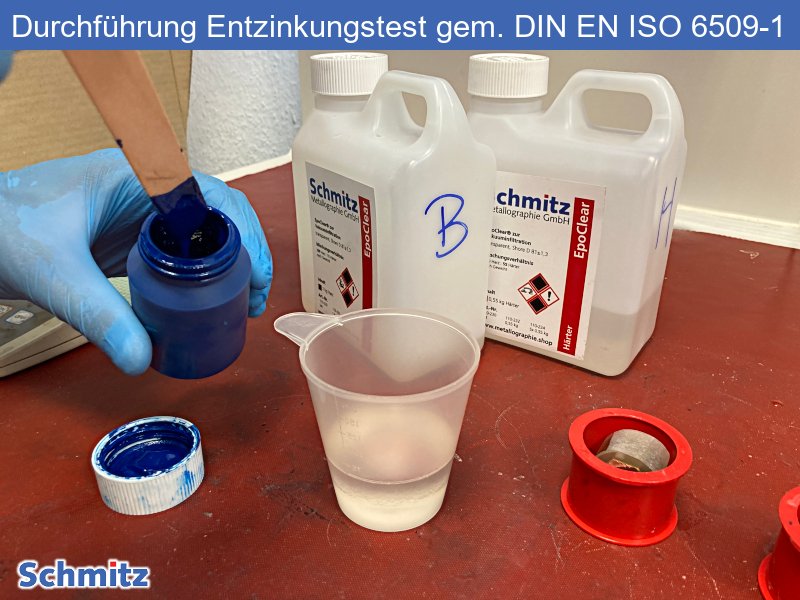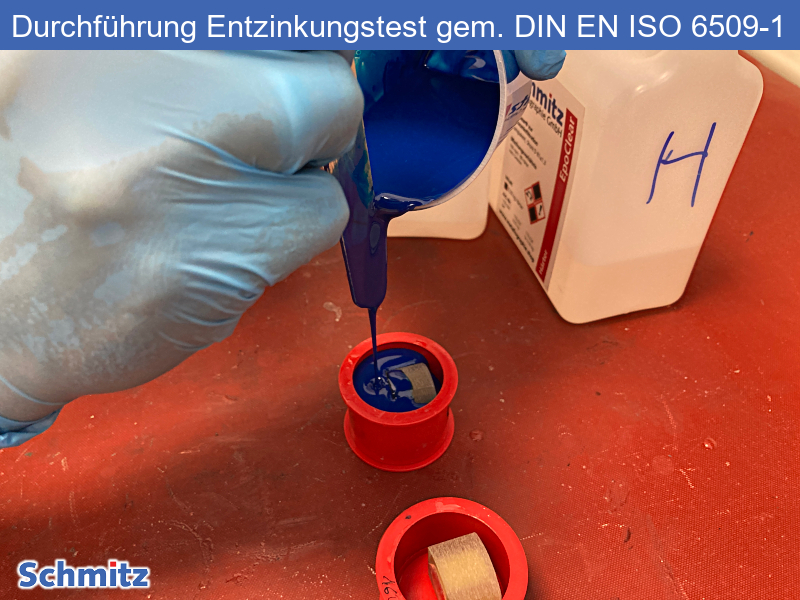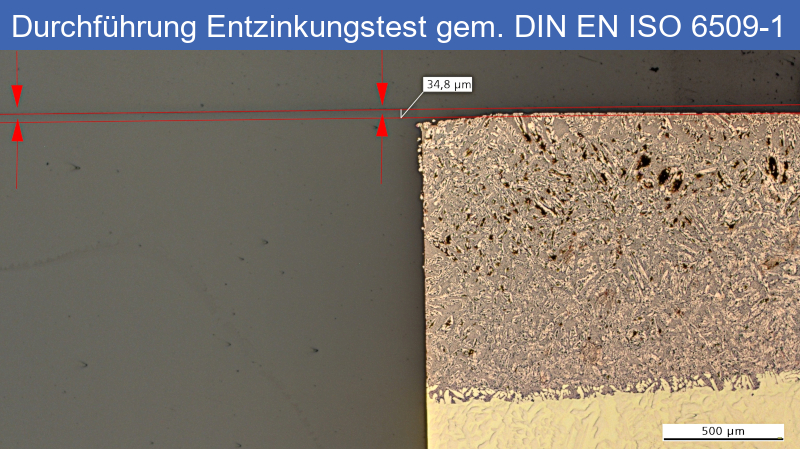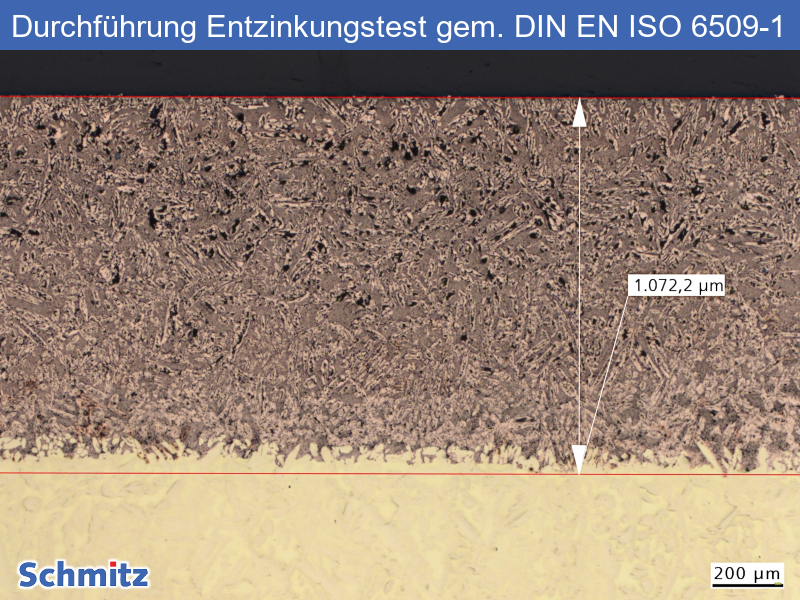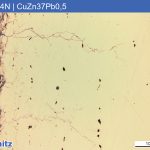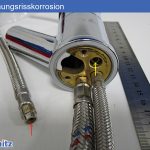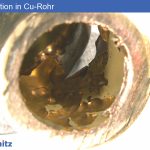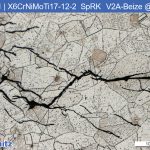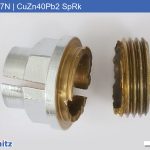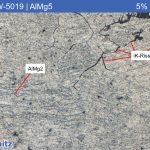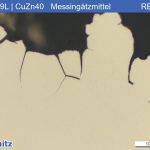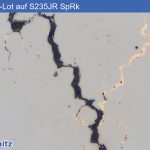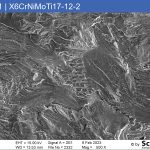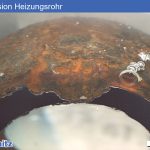Carrying out a dezincification test according to DIN EN ISO 6509-1
| State | Dezincification test according to DIN EN ISO 6509-1 |
|---|
A non-conductive embedded sample is wet-ground to at least P500 grit. The surface of the sheath is then lightly ground so that the sample can be placed in the solution. According to the standard, the sample should be at least 15 mm from the bottom of the vessel. For this purpose, we positioned the sample slightly off-centre in the embedding mould. The solution consists of an approx. 1% aqueous CuCl2 solution. The ageing time is 24 h at 75 °C.
Some alloys degerminate very strongly and a copper sponge grows on top. This loose copper sponge is removed by light brushing. The sample is cut smaller and re-embedded perpendicular to the de-zincified surface. In order to also determine the loss of material over the surface, we dye the EpoClear during the 2nd embedding and infiltrate it by means of vacuum. The material loss (in relation to the original P500 ground surface) can thus also be measured, but it is not part of the standard. It provides an interesting additional parameter for material comparisons. Afterwards, the ground section is prepared and polished. The dezincification depth (plug or layer dezincification) is characterised by light microscopy and evaluated according to DIN EN ISO 6509-2.

